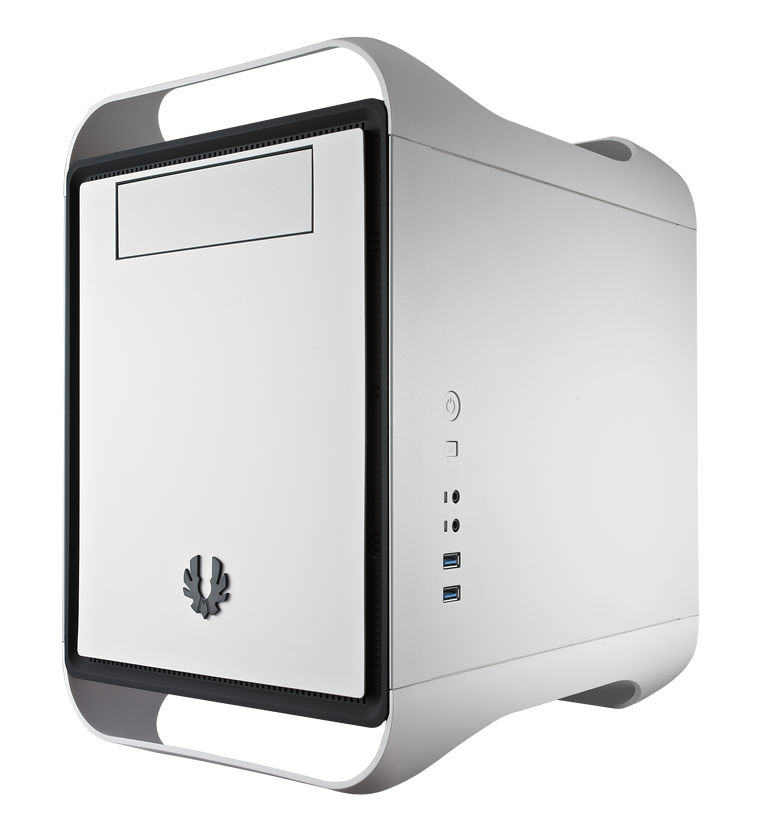When our current (and soon to be previous) generation of games consoles released, it became apparent that the hardware was on track to converge with the kinds of things you’d find in a modern home computer. Both the 360 and PS3 use graphics cards that mirrored what was available in PCs upon their release, as well as the kinds of multi-core processors you see in desktop machines. The PS3 initially even allowed you to install Linux on it, before the Sony police decided it was too much of a health hazard for them to allow people to tinker with their systems.
However, the closed and consistent nature of the console market means that hardware doesn’t stay current for very long. Manufacturers suffer short term losses when delivering cutting edge components at low prices upon release, so they need to make it up later in the console’s life cycle (and also from game revenue).
The closedness of consoles poses another problem. There’s no question that all console manufacturers are pushing their products as being the media hubs of the home. Connect one up to your living room and use it to surf the internet and as a media server. Although they often manage to do this elegantly, there are many sacrifices to be had in lack of support for file formats, poor internet browsers and other native applications. Essentially, they are becoming more and more like computers (including the increasingly common sight of crashing games and lengthy firmware updates!), but an actual PC can do most of these things better.
The main trade-offs (and therefore arguments in favour of consoles) seem to be:
- A console is more convenient – no tinkering with hardware required, you can just stick in a game and never worry about it not working.
- A console fits into the living room better
- A console is cheaper
The first point is probably true in general. Aside from the crashing, installing and updating I mentioned, which kinda makes consoles not as good as they used to be compared with PCs on the convenience front, a console still generally provides a ‘plug and play’ sort of experience.
But my computer looks better under the TV than the PS3!
 However, the second and third points are sometimes taken as a given, and it’s not really that clear whether these arguments are actually that valid.
However, the second and third points are sometimes taken as a given, and it’s not really that clear whether these arguments are actually that valid.
For size and fit, I direct you to the mini ITX motherboard form factor. It is gaining popularity fast and basically incorporates the vast majority of useful things from a standard ATX motherboard (the things that go into large towers), including, importantly, a PCI Express slot for a discrete graphics card. A quick internet search will find you many small cases that would fit right into a living room entertainment centre.
Although it’s a bit larger, my personal favourite is the BitFenix Prodigy (pictured right). It’s still dinky enough to fit into a living room setup, but can accommodate high end graphics cards and cooling systems with ease, making for a great gaming enclosure.
Hang on… did you say cheaper?
The cost argument is one that I’d almost taken for granted myself, so I thought I’d do a little pricing experiment. The next generation of consoles are expected in about a year, but let’s imagine it’s happening now (indeed the Wii U was only recently released). New consoles are usually pricey and I’m assuming you’ll want a second controller at the very least to allow you to play with others (yes I know online multiplayer is making that less necessary and I have beef with that, but that is for another day). I’d say £450 is a realistic price on a new console + controller combo.
Now let’s have a look at a mini ITX PC build. Without going into a huge amount of detail (because it’s not the point here), my living room gaming PC will be based in a Prodigy case using a Gigabyte H77N-WiFi motherboard; 8GB RAM; a Core i5 3450 quad core processor; both a 128GB SSD and a 1TB HDD; and crucially for a gaming system, a GTX 660Ti graphics card, which provides 60+ fps on many demanding games at 1080p with high graphical settings. I’ve done a more detailed costing of this build in its entirety and £900 is the ball-park figure you’re looking at (don’t worry, I’ve included things like 2 Xbox controllers for your gaming pleasure).
Okay, so a PC is double the price, right?
Well, in terms of initial cost, the PC is more expensive. But you probably already figured that. What is more interesting is to look at the cost over the lifetime of the product. As a gamer, your biggest expense is going to be, well, games. Hence the cost of a PC over its gaming life would be:
900 + ppx
where pp is the price of a PC game and x is the number of games you buy. Similarly for a console:
450 + pcx
With some simple algebra, you can show that for a PC to be cheaper overall, you need that:
x > 450/(pc – pp)
Not surprisingly, the cheaper PC games are in relation to console games, the less games you need to buy to make up for the cost difference.
Let’s attach some real numbers to this. Using the top 10 bestsellers on Amazon for the PS3 and 360, I get an average (rounded) game price of £29.50. Doing the same on Steam for PC games (arguably more attractive than boxed PC games these days) gives an average of £17.20. This gives us an average price differential of £12.30. Based on this, if you buy 37 games or more during your machine’s life, a PC will actually be cheaper in the long run. For the casual gamer, this may seem high, but it’s not an unattainable number by any means.
In fact, let’s suppose you keep your PC/console for 4 years. If your console is made by Microsoft (and who knows – Sony could follow judging by their losses with the PS3), you’ll probably have to pay a subscription fee to play games online. At present, this is £30 a year. This adds £120 to the lifetime cost of the console. The formula then becomes:
x > 330/(pc – pp)
Using the same £12.30 price difference as before, if you buy 27 games or say 7 games a year, you’ll have made up the price difference as a PC gamer over the console.
etc.
Of course there are the usual caveats to this sort of exercise. There are lots of other things that would be considered throughout the lifetime of a piece of hardware.
With console games, the price difference could be lower if you factor in being able to trade in your used games. But as digital distribution is growing, and games publishers are trying to clamp down on used game sales (another thing I have beef with), this may become less of an option in future. And since console manufacturers control their online stores strictly, the news for price competition in a digital distribution world seems bleak. The PlayStation Network was charging £50 to download FIFA 13 upon release when a physical copy was at least £10 cheaper in stores, which is plain ridiculous. Imagine if there were no physical option (quite likely in future)? In comparison, the PC offers much more openness to competition, even with digital distribution. Hence, I think that the console used game argument is counterbalanced (at least partially) by the abundance of promotions and cheap game offers for the PC.
Other than that, a PC is far more versatile for non-game tasks (and once again, more open). Multitasking is far easier – you can run Skype calls and play games whilst listening to your music collection in the background. PC games are open to modding and other cool user-created content not available on consoles. There are also lots of free to play games available, and a wealth of emulators and retro gaming that will allow to play games meant for other platforms anyway. Why get locked into a console’s ecosystem when you can have it all? I think most of the qualitative advantages of the console can be cancelled out by analogous qualitative advantages of the PC.
Ultimately, as with many things, the decision becomes a somewhat subjective one based on what kinds of things you value more in a system. However, as I’ve shown, the fact that size and price are not as much of an issue as you might have thought makes the living room gaming PC a far more attractive proposition than it used to be. Hell, even Valve seem to think so – they’re trying to bridge the gap between the two with a ‘Steam Box’ of some sort in the near future. (If nothing else, I hope this brings more gaming availability to Linux!)

